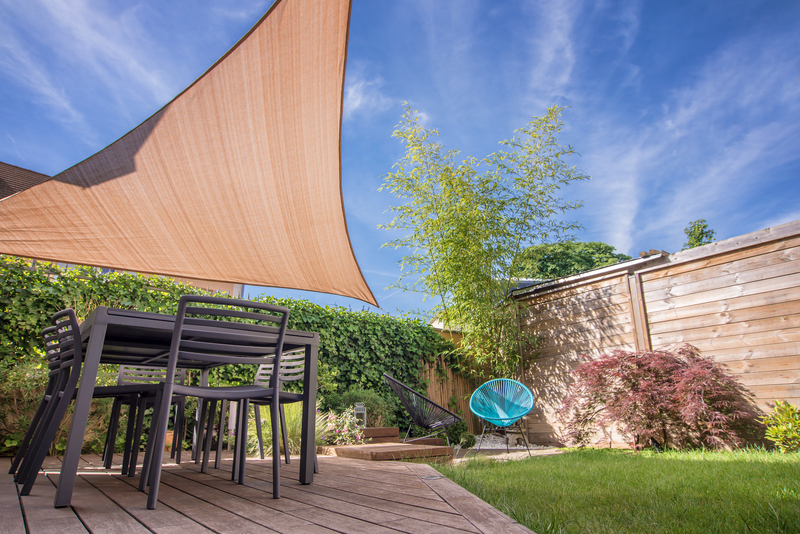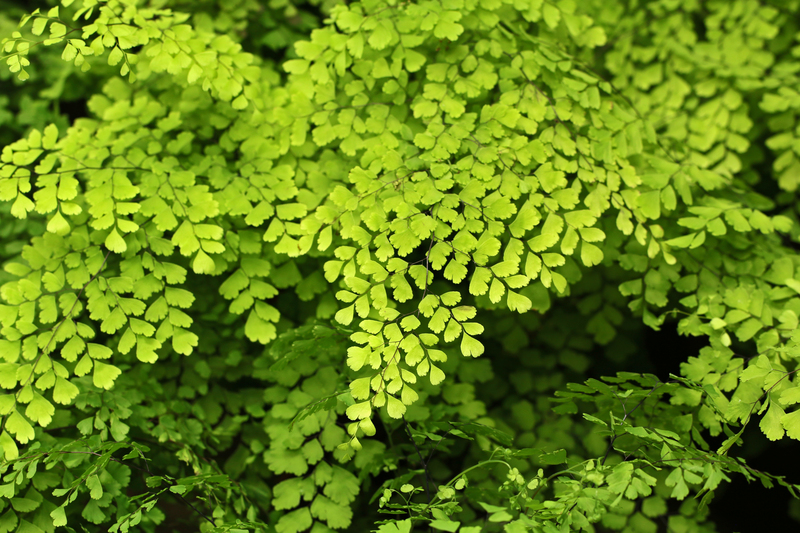From Pot to Plate: Herb Gardens
Posted on 30/05/2025
From Pot to Plate: Exploring the World of Herb Gardens
In today's modern kitchens, nothing adds freshness and vibrancy quite like herbs snipped straight from your own garden. Herb gardens offer a delightful way to bring culinary magic to your meals and a dash of green serenity to your space. Whether you live in a countryside estate, a city apartment, or anywhere in between, cultivating a thriving collection of herbs-- from pot to plate-- is both accessible and rewarding.

Why Grow Your Own Herb Garden?
Herb gardening isn't just about convenience; it comes with a multitude of benefits for your health, environment, and culinary adventures:
- Freshness and Flavor: Nothing beats the taste of just-picked herbs, brimming with essential oils and nutrients.
- Cost Savings: Growing herbs at home is far more economical over time than buying small bundles from the grocery store.
- Reduced Food Waste: Pick only what you need, when you need it, reducing spoilage and waste.
- Eco-Friendly: Homegrown herbs eliminate packaging waste and the carbon footprint from transportation.
- Therapeutic Effects: Gardening is proven to reduce stress, improve mood, and promote relaxation.
Choosing the Right Herbs for Your Garden
Selecting the right herbs for your pot garden is crucial for a successful and useful harvest. Start by considering the dishes you enjoy cooking regularly and the herbs that will thrive in your local climate.
The Most Popular Culinary Herbs to Grow
- Basil (Ocimum basilicum): Perfect for Italian and Southeast Asian cuisines, basil loves warmth and plenty of sunlight.
- Parsley (Petroselinum crispum): Incredibly versatile, parsley adds freshness to soups, salads, and sauces.
- Cilantro (Coriandrum sativum): Essential for Latin American, Indian, and Southeast Asian dishes, cilantro grows best in cooler conditions.
- Rosemary (Salvia rosmarinus): An aromatic herb perfect for roasts and breads; it thrives with plenty of sun and well-draining soil.
- Thyme (Thymus vulgaris): A hardy herb that complements meats, vegetables, and even desserts.
- Mint (Mentha spp.): Fantastic for drinks and desserts, mint spreads vigorously--so keep it in its own container.
- Chives (Allium schoenoprasum): Their mild onion flavor is a favorite on baked potatoes, eggs, and creamy soups.
- Sage (Salvia officinalis): Rich and earthy, sage pairs beautifully with poultry and pasta dishes.
- Dill (Anethum graveolens): This feathery herb brightens up seafood, yogurt sauces, and pickles.
- Oregano (Origanum vulgare): A Mediterranean staple, beloved for pizza, pasta, and grilled meats.
It's wise to start small and expand your collection as you gain confidence in herb gardening.
Starting Your Herb Garden: Pots, Plots, and Indoor Solutions
One of the greatest advantages of growing herbs from pot to plate is that you don't need a sprawling backyard to set up your first garden. Here's how to create your ideal herb haven anywhere:
Container Herb Gardens: Growing in Pots
If you're short on outdoor space, container gardening is the perfect solution. Here's what you'll need:
- Pots or Planters: Choose containers with drainage holes to prevent waterlogged soil.
- Quality Potting Mix: A lightweight, well-draining mix is essential for robust herb growth.
- Location: Position pots where they'll receive at least 6 hours of sunlight each day--south-facing balconies or patios are ideal.
- Watering Can: Regular, moderate watering keeps herbs healthy but avoid overwatering.
Tips: Group herbs with similar water and sunlight needs together. Fast-spreading herbs like mint and oregano should always be grown separately to prevent them from overtaking other plants.
Creating an Indoor Herb Garden
Indoor herb gardens are perfect for those with little or no outdoor space. Here's how to get started:
- Use Wide, Shallow Pots: Herbs have relatively small root systems and thrive in shallow containers placed on sunny window sills.
- Grow Lights: If natural sunlight is limited, supplement with LED or fluorescent grow lights for 12-16 hours daily.
- Humidity and Air Circulation: Indoor air is often dry, so mist regularly and provide good air flow to prevent fungal diseases.
Your living room, kitchen counter, or even an unused shelf can become a vibrant source of homegrown flavor!
Outdoor Herb Plots and Raised Beds
If you have a bit more space, dedicate a section of your garden or a raised bed to herbs. Most culinary herbs appreciate full sun and well-draining soil. Plan your beds to allow easy access for harvests and ensure tall herbs don't overshadow low-growing varieties.
Planting and Caring for Herbs: From Seedling to Harvest
Whether you're sowing seeds or purchasing starter plants, success comes from a few basic principles:
Planting Herbs from Seeds
- Read the Packet: Each herb has specific germination times and planting depths. Follow the instructions for best results.
- Seed Starting Trays: Use trays or small pots filled with moist potting mix and cover lightly with soil.
- Warmth and Light: Most herb seeds need warmth and light to germinate. Use a sunny windowsill or a warming mat.
- Transplant Carefully: Once seedlings have a set of true leaves and the threat of frost has passed, move them to their final home.
Transplanting Starter Plants
- Loosen Roots: Gently tease out roots before planting to encourage outward growth.
- Spacing: Give each herb sufficient space to grow--typically 6-12 inches apart, depending on the plant.
- Water Well: Water immediately after transplanting and keep soil evenly moist as the plant adjusts.
Herb Garden Care Tips
- Watering: Herbs do not like "wet feet." Water deeply when the soil is dry to the touch, then allow the surface to dry out between waterings.
- Fertilizing: Too much fertilizer can cause lush, weak growth with less flavor. Use an organic liquid feed at half strength once a month.
- Pruning: Regularly pinch back growing tips. This encourages bushier plants and a longer harvest period.
- Pest Control: Herbs suffer few pests but watch for aphids, spider mites, and snails. Use natural solutions like neem oil or introduce beneficial insects.
Harvesting and Using Your Fresh Herbs
One of the joys of the pot-to-plate herb garden is harvesting what you need, when you need it. But harvesting technique matters for continual production and optimal flavor.
The Right Way to Harvest Herbs
- Time it Right: Harvest just before the plant flowers for the best flavor and highest concentration of essential oils.
- Morning Harvest: Herbs are at their most flavorful earlier in the day before the sun evaporates aromatic oils.
- Pinch, Don't Pull: Use clean scissors or pinch stems just above a leaf node. This stimulates new growth and a bushier plant.
- Don't Overdo It: Never harvest more than one-third of a plant at once to ensure ongoing growth.
From Harvest to Plate: Using Homegrown Herbs
Herbs elevate cuisine. Add chopped fresh herbs at the end of cooking to preserve freshness, or use them whole as garnishes. Popular ways to use homegrown herbs from your kitchen garden include:
- Sauces & Pestos: Basil, parsley, and cilantro make delicious fresh sauces and pesto.
- Herb Butters: Combine softened butter with minced herbs for grilling, bread, or vegetables.
- Infused Oils/Vinegars: Steep sprigs of rosemary, thyme, or tarragon in oil or vinegar for exquisite homemade condiments.
- Teas & Cocktails: Mint, lemongrass, and basil are fantastic in summer drinks, both hot and cold.
- Fresh Salads: Chopped chives, dill, and parsley add brightness and flavor.
Preserving Excess Herbs
Even the most dedicated cook can't always keep up with a bumper crop. Fortunately, fresh herbs can be preserved for later enjoyment:
- Freezing: Chop herbs and store in ice cube trays topped with water or olive oil--perfect for drop-in flavor boosts.
- Drying: Bundle stems and air-dry in a dark place, or use a dehydrator. Store in airtight containers.
- Infusions: Make flavored oils, vinegars, and simple syrups to bottle the essence of summer.
- Salted Herbs: Blend herbs with sea salt for easy flavoring any time.
Designing Your Herb Garden for Beauty and Utility
A herb garden isn't just functional; it can be a visual showpiece. Get creative with your layout and container choices:
- Vertical Gardens: Use wall-mounted planters, pallets, or hanging baskets to maximize space on balconies or patios.
- Spiral Herb Beds: A raised spiral of stones or bricks creates different microclimates for a range of herbs.
- Kitchen Countertop Herb Pots: Arrange coordinated pots on your kitchen windowsill for style and immediate access.
- Companion Planting: Mix herbs with vegetables in raised beds--many herbs, like basil and dill, repel garden pests and attract pollinators.

Common Herb Gardening Challenges and Solutions
Even well-tended herb gardens can face challenges. Here's how to troubleshoot common problems:
- Leggy Growth (long, weak stems): Indicates insufficient sunlight. Move your pots to sunnier locations.
- Yellowing Leaves: Often a sign of overwatering or poor drainage. Check pot drainage and adjust watering schedule.
- Powdery Mildew: Promoted by high humidity and poor air flow. Space plants apart and ensure good ventilation.
- Pest Infestations: Use insecticidal soap, neem oil, or introduce ladybugs to control aphids naturally.
Embracing the Pot-to-Plate Journey
There's immense satisfaction in picking a sprig of homegrown basil or a handful of vibrant cilantro just moments before preparing your next meal. Beyond taste and nutrition, the journey from pot to plate nurtures patience, creativity, and a deeper connection with the food you eat.
Whether you're a budding chef, a busy professional, or an urban homesteader, starting your own herb garden is a small act that yields big rewards. From windowsill pots to sprawling backyard patches, every pinch of green you grow will add flavor and freshness-- straight from your pot to your plate.
Ready to Start Your Herb Garden?
With just a few pots, some seeds, and a little daily attention, you'll have fresh herbs at your fingertips all season long. Start planning your herb garden today and enjoy the unbeatable taste of "grow-your-own" from pot to plate.

